Through this piece we’re going to look at 10 things to forage in spring, from plants to seaweeds & mushrooms there’s plenty out there to enjoy.
Foraging for wild edibles is a fun and rewarding way to connect with nature and get a taste of the local flora. In spring, the UK is home to a variety of delicious and nutritious plants, mushrooms, and seaweeds that can be found growing in forests, fields, and along the coast. Here are 10 of the best species to look for and enjoy this season.
Lets look closer at the 10 things to forage in spring
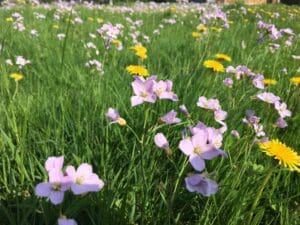
Wild garlic (Allium ursinum)
Wild garlic is a flavorful herb that grows in shady woods and along streams. Its leaves, flowers, and bulbs are all edible and have a delicate garlic flavor. To identify it, look for long, pointed leaves that smell strongly of garlic when crushed.

Stinging nettle (Urtica dioica)
Stinging nettle is a nutritious plant that is often seen as a pesky weed, but it can be turned into a delicious and healthy dish. The leaves and stems contain vitamins A, C, and K, iron, and calcium. To identify it, look for its distinctive jagged-edged leaves and tiny, stinging hairs.
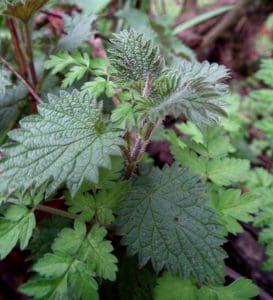
Chickweed (Stellaria media)
Chickweed is a sweet and tender plant that grows in sunny or partially shaded areas. Its leaves and stems are edible and have a mild, slightly nutty flavor. To identify it, look for small, white flowers and opposite leaves that are about 1cm long.
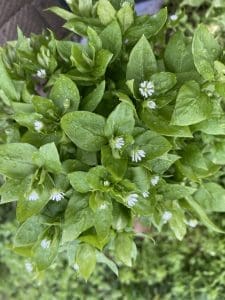
Dandelion (Taraxacum officinale)
Dandelions are well-known for their bright yellow flowers, but their leaves, stems, and roots are also edible and have a slightly bitter taste. To identify them, look for jagged-edged leaves that form a rosette around the base of the plant.
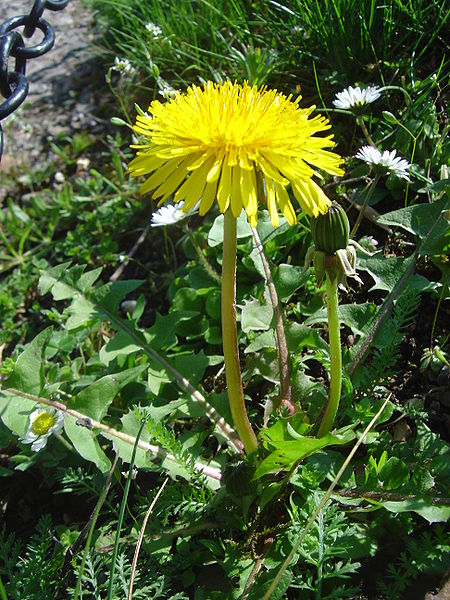
Wild strawberry (Fragaria vesca)
Wild strawberries are smaller than the cultivated varieties, but they have a sweeter and more intense flavor. They grow in sunny or partially shaded areas and have three leaves and white flowers with five petals. To identify them, look for small red fruits growing on the ground.
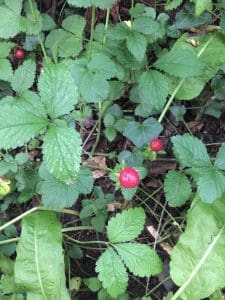
More of the 10 things to forage in spring
Scarlet Elf Cup Mushrooms (Sarcoscypha coccinea)
Scarlet Elf Cup Mushrooms are a delicate and flavorful species that grows specifically on decaying willow. They have a distinctive scarlet red cup-like shape and grow on the ground or on fallen wood. To identify them, look for their bright red color and smooth texture.
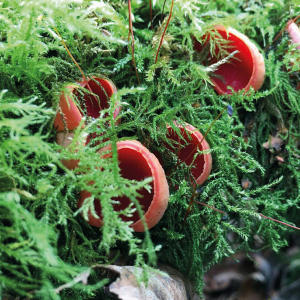
St George’s Mushrooms (Calocybe gambosa)
St George’s Mushrooms are a large and meaty species that grows in grassy areas, especially in fields and pastures. To identify it, look for its distinctive brown cap with white gills and a white stem.
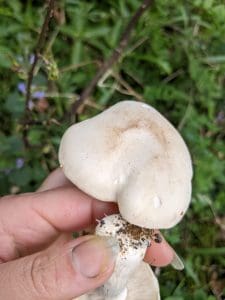
Dulse (Palmaria palmata)
Dulse is a red seaweed that grows along the coasts of the UK and is a rich source of minerals and vitamins. To identify it, look for its purplish-red color and fleshy texture.
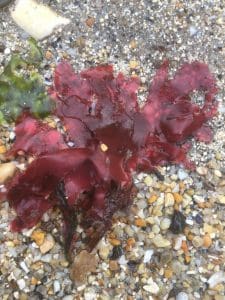
Laver (Porphyra umbilicalis)
Laver is a dark coloured seaweed that grows along the coasts of the UK and is often used to make a Welsh dish called “Laverbread.” To identify it, look for its distinctive flat and shiny leaves that are attached to the rocks by a small stem.
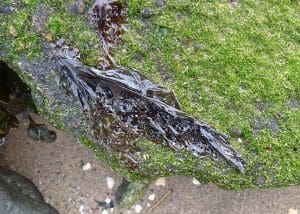
Sea beet (Beta vulgaris subsp. maritima)
Sea beet is a wild relative of beetroot that grows along the coasts of the UK. Its leaves, stems, and roots are all edible and have a salty, spinach-like flavor.
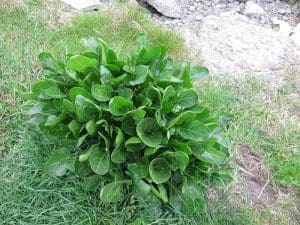
Well that’s some of our favourite things to forage through spring although there are plenty of others 🙂
How about some recipes for the 10 things to forage in spring…
Wild garlic pesto
Ingredients:
- 1 cup wild garlic leaves
- 1/2 cup freshly grated parmesan cheese
- 1/2 cup toasted pine nuts
- 1/2 cup extra virgin olive oil
- Salt and pepper to taste
Instructions:
- Wash the wild garlic leaves and remove any tough stems.
- In a food processor, combine the wild garlic leaves, parmesan cheese, and toasted pine nuts.
- With the motor running, slowly pour in the olive oil until a smooth pesto forms.
- Season with salt and pepper to taste
Stinging nettle soup
Ingredients:
- 2 cups stinging nettle leaves, washed and chopped
- 1 onion, diced
- 2 potatoes, peeled and diced
- 4 cups vegetable broth
- Salt and pepper to taste
Instructions:
- In a large pot, sauté the onion until softened.
- Add the diced potatoes and stir to combine.
- Pour in the vegetable broth and bring to a boil.
- Add the chopped stinging nettle leaves and simmer for 10 minutes or until the potatoes are tender.
- Season with salt and pepper to taste.
- Blend the soup until smooth and serve hot
Chickweed salad
Ingredients:
- 4 cups chickweed leaves, washed and dried
- 1/2 red onion, thinly sliced
- 1/2 cup crumbled feta cheese
- 1/4 cup extra virgin olive oil
- 2 tablespoons lemon juice
- Salt and pepper to taste
Instructions:
- In a large bowl, combine the chickweed leaves, sliced red onion, and crumbled feta cheese.
- In a small bowl, whisk together the olive oil, lemon juice, salt, and pepper.
- Pour the dressing over the salad and toss to coat.
- Serve immediately.
Dandelion and bacon salad
Ingredients:
- 4 cups dandelion leaves, washed and dried
- 4 slices of bacon, diced
- 1/2 red onion, thinly sliced
- 1/2 cup crumbled blue cheese
- 2 tablespoons balsamic vinegar
- 2 tablespoons extra virgin olive oil
- Salt and pepper to taste
Instructions:
- In a large skillet, cook the diced bacon until crispy.
- In a large bowl, combine the dandelion leaves, cooked bacon, sliced red onion, and crumbled blue cheese.
- In a small bowl, whisk together the balsamic vinegar, olive oil, salt, and pepper.
- Pour the dressing over the salad and toss to coat.
- Serve immediately.
Wild strawberry sorbet
Ingredients:
- 2 cups wild strawberries, hulled
- 1/2 cup sugar
- 1/2 cup water
- 1 tablespoon lemon juice
Instructions:
- In a small saucepan, combine the sugar and water and bring to a boil.
- Reduce heat and simmer until the sugar has dissolved.
- In a blender, puree the wild strawberries, lemon juice, and sugar syrup.
- Pour the mixture into a freezer-safe container and freeze for at least 4 hours or until firm.
- Scoop the sorbet into glasses and serve.





